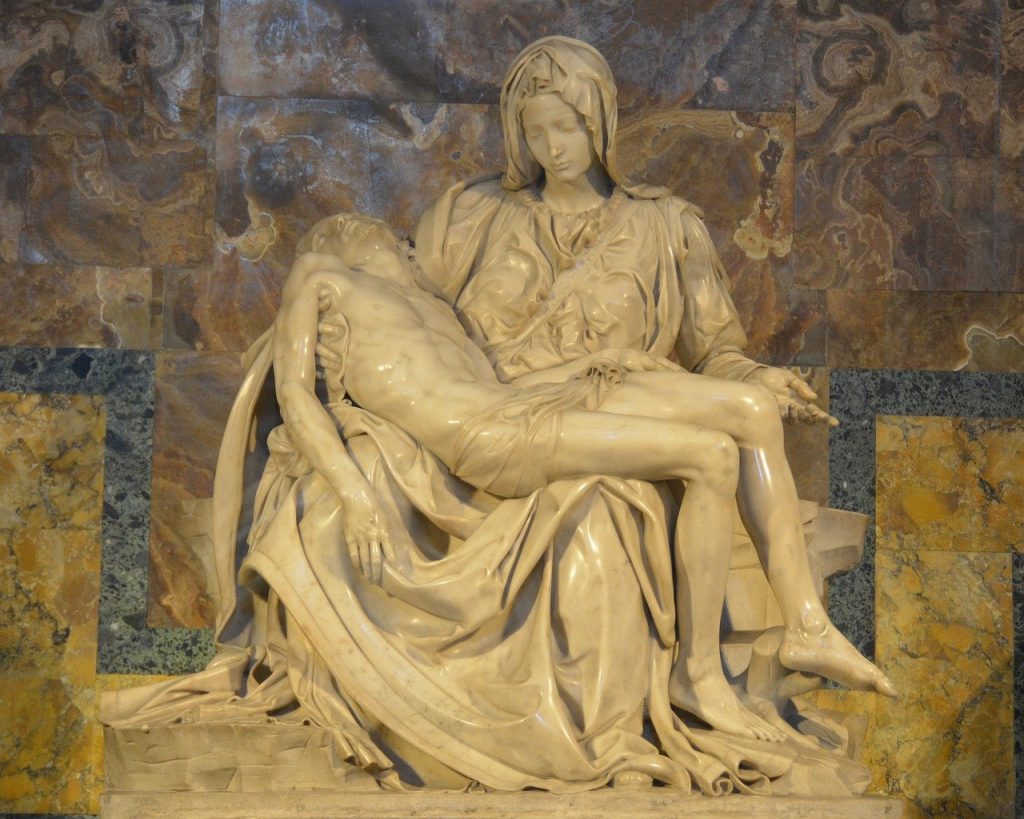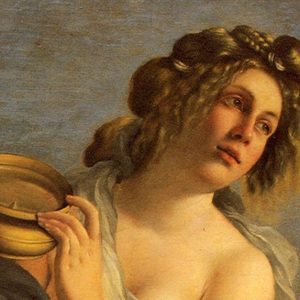Michelangelo di Lodovico Buonarroti Simoni, born on 6th March 1475 in Caprese, Italy is famous for his contributions to sculpture, painting, architecture, and poetry. 2025 is the 550th anniversary of his birth with celebrations across Italy, but predominantly in Florence.
Born to Ludovico di Leonardo di Buonarroti di Simoni and Francesca di Neri del Miniato di Siena, Michelangelo’s family had noble roots but faced financial difficulties. Shortly after his birth, the family returned to Florence, a city that was, at the time, a hub of artistic and intellectual activity. From a young age, Michelangelo displayed a keen interest in art, often neglecting formal schooling to copy paintings from churches and seek the company of artists.
At 13, he apprenticed under Domenico Ghirlandaio, a master fresco painter with the largest workshop in Florence. This apprenticeship provided Michelangelo with foundational skills in fresco technique, perspective, and figure drawing. Recognising his prodigious talent, Lorenzo de’ Medici, the de facto ruler of Florence, invited Michelangelo to study at his Humanist academy. Here, he was exposed to prominent philosophers and writers, further enriching his artistic vision. During this period, he sculpted notable reliefs such as the “Madonna of the Stairs” and “Battle of the Centaurs.”
Rise to Prominence
Following Lorenzo de’ Medici’s death in 1492, Michelangelo sought new opportunities. He briefly worked in Bologna before moving to Rome in 1496. There, he received a commission from Cardinal Raffaele Riario to create the “Bacchus,” a life-sized marble statue depicting the Roman god of wine. Although the work was initially rejected by the cardinal, it demonstrated Michelangelo’s ability to imbue classical subjects with a unique dynamism.
In 1498, Michelangelo accepted a commission from French Cardinal Jean de Bilhères-Lagraulas to sculpt the “Pietà,” intended for the cardinal’s funeral monument. This masterpiece, housed in St. Peter’s Basilica, portrays the Virgin Mary cradling the lifeless body of Christ. The “Pietà” garnered widespread acclaim for its delicate rendering and emotional depth.
Return to Florence and the Statue of David
In 1501, Michelangelo returned to Florence. There he was commissioned to create a monumental statue of David, symbolising the city’s republican ideals. Carved from a single block of Carrara marble, the statue stands at 17 feet and depicts the biblical hero in a moment of contemplative tension before his battle with Goliath. Unveiled in 1504, the “David” was hailed as a masterpiece of Renaissance sculpture. The detail demonstrates Michelangelo’s profound understanding of human anatomy and form.
The Sistine Chapel Ceiling
In 1505, Pope Julius II summoned Michelangelo back to Rome to design the pope’s tomb, a project that faced numerous delays and complications. During this period, Michelangelo also received the commission to paint the ceiling of the Sistine Chapel, a task he initially resisted, considering himself primarily a sculptor. Nevertheless, between 1508 and 1512, he transformed the chapel’s ceiling into one of the most celebrated frescoes in art history.
A glimpse at the Sistine Chapel
The ceiling’s central panels narrate episodes from the Book of Genesis, including the iconic “Creation of Adam,” where God’s outstretched hand nearly touches that of Adam, symbolising the divine spark of life. Surrounding these scenes are prophets, sibyls, and ancestors of Christ, all rendered with Michelangelo’s characteristic dynamism and anatomical precision.
Architectural Endeavours
Beyond sculpture and painting, Michelangelo made significant contributions to architecture. In 1519, he began work on the Medici Chapel in Florence, designing both its structure and the tombs of prominent Medici family members. The chapel’s innovative architectural elements and sculptural decorations reflect Michelangelo’s integration of architecture and sculpture.
In 1546, he was appointed chief architect of St. Peter’s Basilica in Vatican City. Taking over from predecessors, Michelangelo redesigned the basilica’s plan and engineered its majestic dome, which remains a defining feature of Rome’s skyline. His architectural vision for St. Peter’s influenced church designs across Europe, cementing his legacy as a pioneering architect.
Late Works and Legacy
In his later years, Michelangelo focused on religious themes, producing several “Pietà” sculptures that reflect a deep personal spirituality. Notably, the “Florentine Pietà,” intended for his own tomb, depicts a sombre and introspective composition, with Michelangelo portraying himself as Nicodemus supporting Christ’s body.
His final work, the “Rondanini Pietà,” left unfinished at his death in 1564, reveals a move towards a more abstract and expressive form, departing from the idealised beauty of his earlier works.
Michelangelo’s influence on Western art is immeasurable. His ability to convey the complexities of the human condition through diverse mediums set new standards for artistic excellence. Artists such as Raphael drew inspiration from his work, and his architectural innovations paved the way for Baroque design.
Michelangelo passed away in Rome on 18 February 1564 at the age of 88. In accordance with his final wish, his body was laid to rest in the Basilica of Santa Croce, Florence. His heir, Lionardo Buonarroti, commissioned Giorgio Vasari to design and construct Michelangelo’s tomb. A grand monument, it took over 14 years to complete and cost 770 scudi. Cosimo I de’ Medici, Duke of Tuscany, provided the marble for the tomb. He also arranged a state funeral in Florence to honour the artist.








